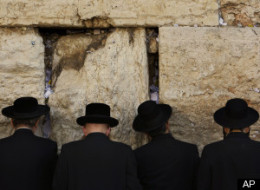NASA pushes for a green jetliner
They might be best known for space travel, but the folks at NASA are determined to shape the future of commercial aviation.
The agency says airliners need to be quieter, greener and more fuel-efficient.
To attain those goals, NASA handed out nearly $6 million in contracts this week to two defense industry giants: Lockheed Martin Corp. and Northrop Grumman Corp.
NASA’s goal is to develop technology that would enable future aircraft to burn 50% less fuel than current models, cut harmful emissions in half and shrink the geographic areas affected by obnoxious airport noise by 83%.
The agency hopes to develop concepts for airliners that could go into service by 2025.
Engineers from Lockheed’s famed-Skunkworks defense enclave in Palmdale won about $3 million to develop the concept. Northrop engineers, working out of the company’s space park in El Segundo, were given $2.65 million.
The engineers will have 12 months to develop a concept for an aircraft that can fly near the speed of sound at a range of 7,000 miles, carrying up to 100,000 pounds of either passengers or cargo.
But don’t expect the traditional “tube-and-wing” design for the aircraft’s wings and fuselage. This project is all about thinking outside the box.
When Massachusetts Institute of Technology's department of aeronautics and astronautics presented its vision of greener commercial planes to NASA earlier this year -- part of a $2.1-million research contract -– there were some bizarre designs.
The university said commercial aircraft design needed to change, much like the changes in automobile design over the last 50 years to become faster and more efficient.
NASA's Environmentally Responsible Aviation Project is sponsoring the study. The project is part of the Integrated Systems Research Program managed by the agency's Aeronautics Research Mission Directorate in Washington.
RELATED:
The future of air travel is ... well, weird
Boeing Dreamliner finally takes to the skies
Dreamliner is causing nightmares for Boeing
-- W.J. Hennigan
Photo: The MIT team presented NASA with its design for the H “hybrid wing body” series to replace the 777 class aircraft now used for international flights. The plane is designed to carry 350 passengers. Credit: MIT / Aurora Flight Sciences






DIAA HADID | 11/24/10 02:40 PM |